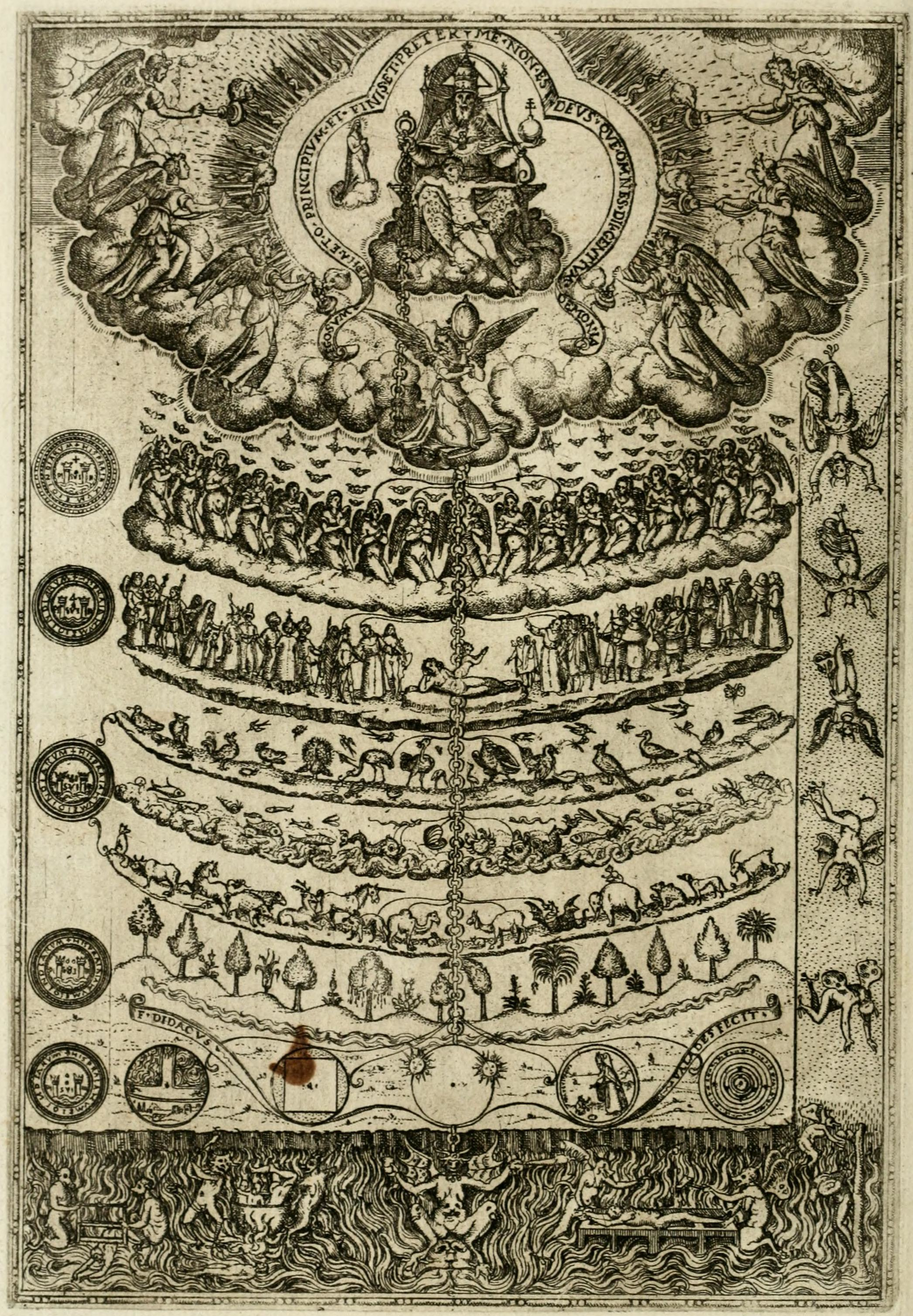Reflections on Tillyard’s The Elizabethan World Picture: Part One
Queen Elizabeth I. “Darnley Portrait” (1575)
The Chain of Being.
In The Elizabethan World Picture (EWP, hereafter), E.M.W. Tillyard describes the worldview which was predominate during the period (1558-1603) and with which the educated people of the era would have been inherently familiar. Throughout the work, Tillyard isolates allusions to this worldview present in the literature and poetry of the period.
This cosmological paradigm was geocentric, despite the recent onset of the Copernican Revolution (a heliocentric paradigm, introduced in De revolutionibus orbium coelestium, 1543). The Elizabethan worldview represents one of the last iterations the Ptolemaic cosmological model (as outlined in Almagest and Tetrabiblos, 2nd century CE). In this model – which was the standing cosmological paradigm for over 1,500 years – the cosmos is divided into a number of concentric spheres, corresponding to: the Primum Mobile (Aristotle’s “First Moved”); the sphere of the fixed stars and zodiac (corresponding to the “firmament” of the Hermetic Piomandres and biblical Genesis; Chokmah of the cabalists; the “Ogdoad,” or eighth sphere); the seven aetheric planetary spheres (from Saturn to the Moon, in their Chaldean order); and, finally, the sublunary sphere (“below the Moon”), which consisted of the four classical elements: fire, air, water and earth (in descending order).
The (Great) Chain of Being (scala naturae) is a hierarchical system of life and matter, functioning as a vital overlay on the Ptolemaic cosmos. God, or the “Unmoved Mover,” occupies the topmost position of the system; followed by the angelic, or Celestial Hierarchy; humans; and concluding with the animal, vegetable and mineral kingdoms (EWP, p. 41). Tillyard attributes the development of the Chain of Being to Plato’s Timaeus; Aristotle; the Alexandrian Jews; and the Neoplatonists (EWP, p. 26).
In this system, God is positioned outside of the causal spheres of the stars and planets, much how we find him in the (Neo-)Platonic hypostases. Next, the Celestial Hierarchy, as described by the Christian Neoplatonist, Pseudo-Dionysius the Areopagite, in his On the Heavenly Hierarchy (5th century CE), consists of nine angelic orders (top to bottom): Seraphim, Cherubim, Thrones, Dominations, Virtues, Powers, Principalities, Archangels and Angels. This angelic hierarchy, which was accepted by Dante, Aquinas and the scholastics (EWP, p. 41), was comprised of immaterial, intellectual (noetic) entities (EWP, p. 43). Humans (the microcosmos, or “little world”), positioned beneath the angels, were presumed to be at the fulcrum of the hierarchy and experienced sensation and passions (EWP, p. 28). Beneath the plane of mankind were the animal, vegetable and mineral kingdoms. At this “degree” (a recurring concept in Tillyard), we encounter the distinction between what Tillyard refers to as the animate/sensitive and inanimate planes (EWP, p. 27), consisting of spirit (life; anima) and matter (the elements).
The Great Chain of Being. Valades (1579)
The animal kingdom is stratified with lions, elephants and eagles at the top and oysters and worms at the bottom, depending on the elemental domain (e.g., air, water or earth) (EWP, p. 29). The oak (corresponding to Jupiter) and the rose (symbolic of the Sun) top the vegetable kingdom – mushrooms and moss at the bottom; gold (also solar) and diamonds top the mineral kingdom (EWP, p. 30), with lead at the bottom. Each plane, being its own nested domain, is united by the sort of planetary correspondences mentioned above.
Finally, the notions of a World Soul (Anima Mundi) (EWP, p. 46) and the ‘Music of the Spheres’ (Musica Universalis; largely, a Pythagorean concept) united the entire scheme into a sort of cosmological symphony and represented a tidy and organized harmony, set in motion by the First Moved and participating in what Tillyard calls a ‘Cosmic Dance’ (EWP, pp. 101-106).


